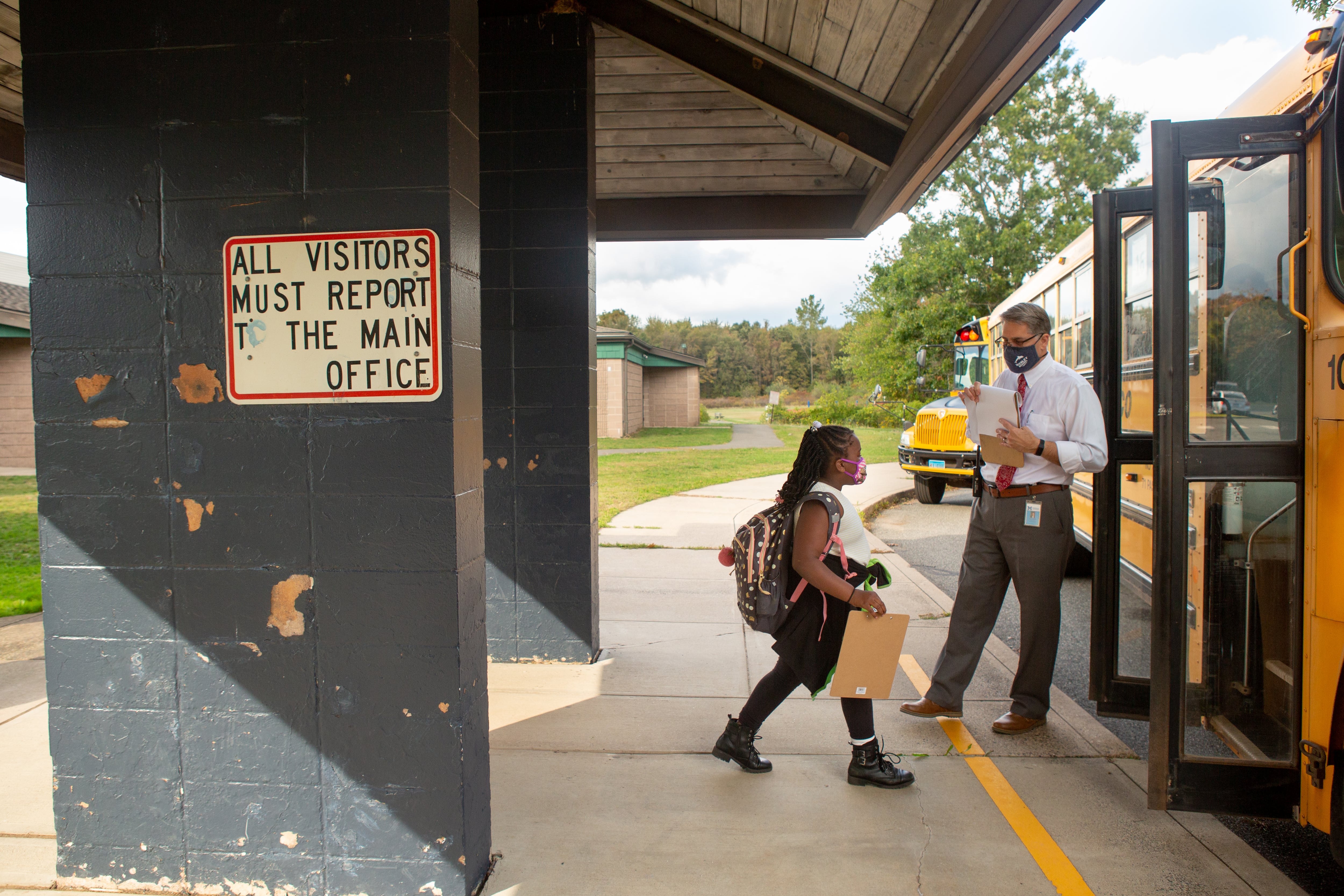Javon May has tried radio ads. He’s planted yard signs. He’s made the rounds at community centers.
Still, on his quest to find new bus drivers for the Houston school district, he sometimes comes up short. That’s because he’s up against stiff competition. Other local districts and big delivery companies, like Amazon, need drivers, too.
But this summer he has a new tool at his disposal: a $2,000 hiring bonus for bus drivers who can start by the first day of school.
“We had to do something, because we were losing out,” said May, who recruits support staff for the district. The bonus has helped, but May is still pounding the pavement. “We really don’t stop looking for bus drivers. That’s always my No. 1 need.”
Schools have struggled to fill a number of lower-paid positions during the pandemic, including bus drivers. Principals don’t expect that to change in the new school year, a federal survey of nearly 860 school leaders released Thursday found.
About 6 in 10 principals said this June that they expected their vacant transportation staff roles to be “very difficult” to fill in the 2022-23 school year. Nearly half said the same about custodians. And around 4 in 10 said tutors would be very difficult to find.
Those school leaders also were most likely to report that they had multiple vacancies for bus drivers and custodians — meaning those roles were both in high demand and hard to staff.
Another survey released last month by the RAND Corporation found that nearly 6 in 10 districts said they were still trying to increase their number of bus drivers, while a third already had. That survey was based on responses from nearly 300 district and charter network leaders compiled from late February to early April.
“We suspect districts are still likely experiencing shortages,” the researchers wrote, “because of competition with other employers for low-wage workers.” Licensing requirements and worker health concerns could also be a factor, they added.
Districts have already tried many tactics to fill support staff roles. Three in 10 of the districts RAND surveyed raised pay or benefits for bus drivers last school year, while more than a quarter asked other staff to drive a bus. Nearly 3 in 10 districts tapped other school staff to perform cafeteria duties.
Districts, like Houston, are also trying hefty stipends and bonuses, often funded by federal COVID relief dollars.
Burbio, a private company that has been tracking school budgets and fall plans, found that in recent weeks there’s been a “marked increase in the size and duration” of incentive payments being used to attract school staff. A Pennsylvania district that serves 8,500 students is offering a $4,000 signing bonus for bus drivers, Burbio noted, on top of paying $25 to $30 an hour. Jefferson County schools in Kentucky are giving bus drivers an extra $6 an hour in incentive pay.
Clark County, Nevada, one of the largest districts in the country, reported that it had hired more than 100 bus drivers after it hiked starting pay to nearly $23 an hour, up from just over $15 an hour. The district is also spending millions of dollars on retention bonuses: Bus drivers, custodians, and food service workers who stick with the district for the year will get $4,500.
May, in Houston, has found that the district’s existing custodial staff are key recruiters for new custodians, so he relies heavily on word of mouth to fill those roles. The city has a large Hispanic immigrant workforce that wants benefits and job stability, so that position isn’t a hard sell.
But bus drivers remain a challenge. May’s goal was to hire 100 new drivers this summer. Since the district announced the $2,000 hiring bonus, May has changed up his online job postings so the bonus is splashed across the top of the ad.
He’s also been reaching out to driver candidates who didn’t go through with the licensing process in the past to see if the $2,000 will entice them to try again.
So far, 95 new drivers will get that bonus, and May is hoping to get over his 100-hire goal. He’s waiting to hear back from several dozen candidates he made offers to after a job fair last weekend.
“Right now, $2,000 is something that will stop people and make them think a second longer,” May said. “It’s going to pay off for us in the long run.” Families will “know that their kids are getting picked up in the morning on time, they’re getting to school on time, and they’re not missing breakfast.”
Last year, bus driver shortages had big consequences for families.
In New Jersey, hundreds of students were left without transportation to school for several weeks — which hit students with disabilities especially hard. Thousands of students with disabilities were stranded without transportation last fall in Chicago. Six months into the school year, the district was still working to assign bus routes to 1,000 general education students. This year, Chicago is raising bus driver pay to $20 an hour to stay competitive.
“I don’t want to be losing because our rates are so much lower,” the district’s CEO, Pedro Martinez, said recently.
As the school year approaches, schools are also looking to fill teacher vacancies. Special education teachers are a particular concern.
The June federal survey found that nearly 9 in 10 school leaders were more concerned about teacher and staff burnout last school year, compared with prior years.
So far, teacher turnover during the pandemic has been the same or a little above pre-pandemic levels — though the full picture of what happened last school year and this summer is still emerging. The federal survey found about 4 in 10 school leaders were more concerned about teachers and staff leaving their roles than in the past.
The RAND report suggests that expanded hiring during the pandemic is a big contributor to the teacher staffing crunch. Researchers found that more than three-quarters of the schools they surveyed had increased their teaching staff, which included substitutes, above pre-pandemic levels.
“In short, we believe it is districts’ increase in number of staff that they seek to employ rather than an exodus from teaching that is straining the teacher labor market,” the researchers wrote.
Kalyn Belsha is a national education reporter based in Chicago. Contact her at kbelsha@chalkbeat.org.






